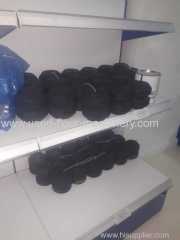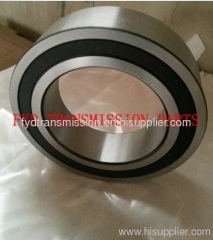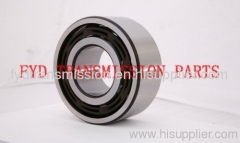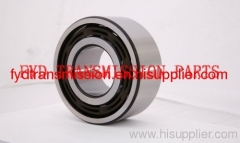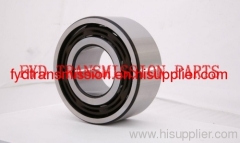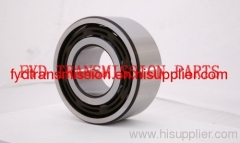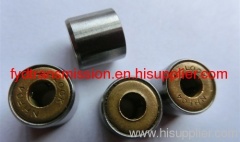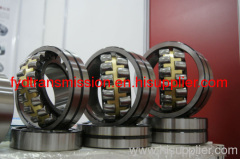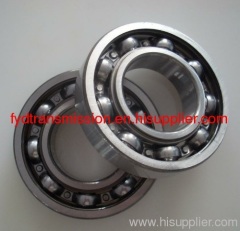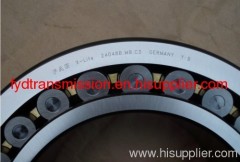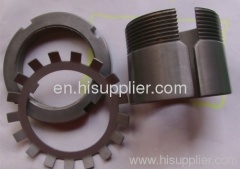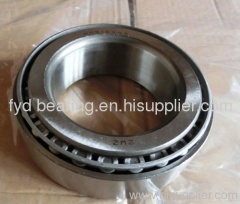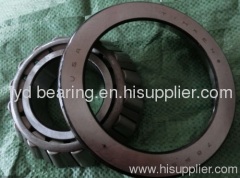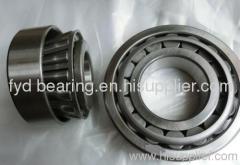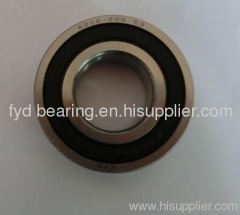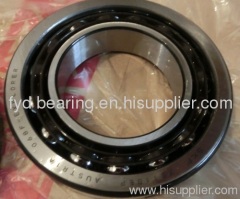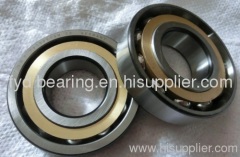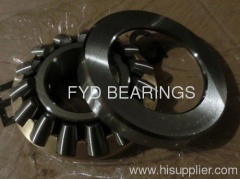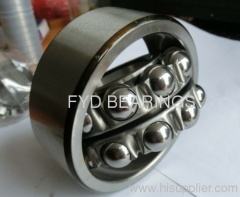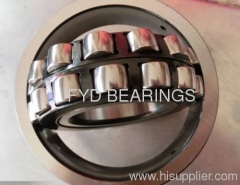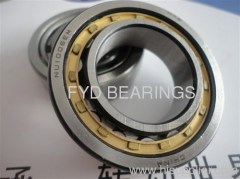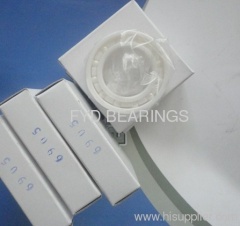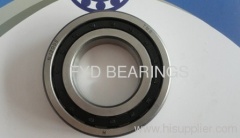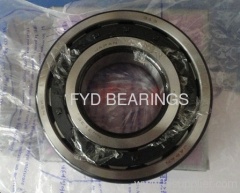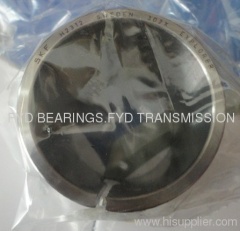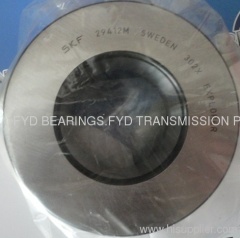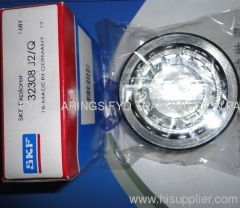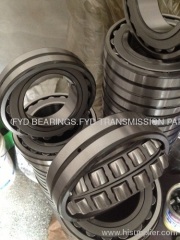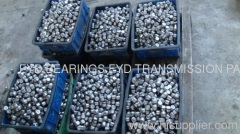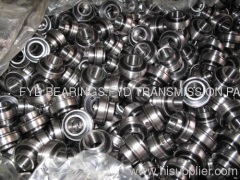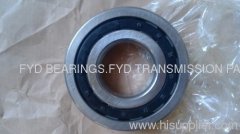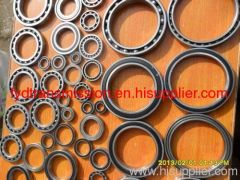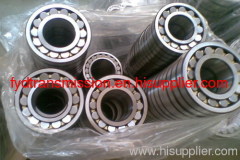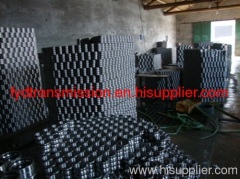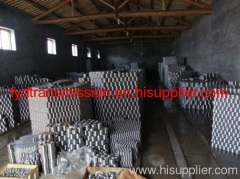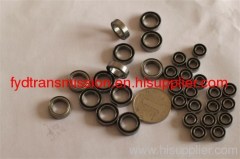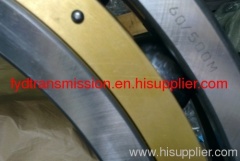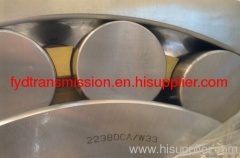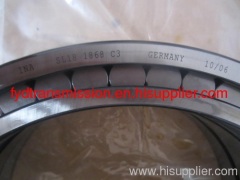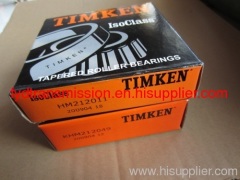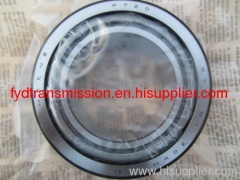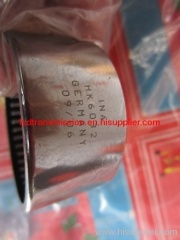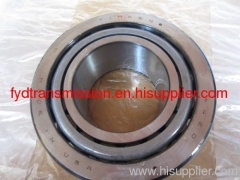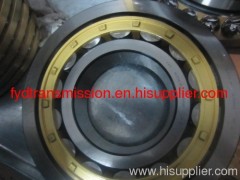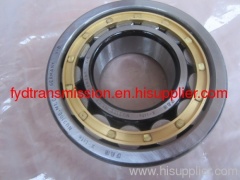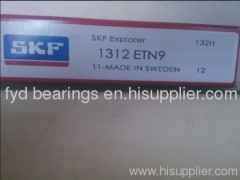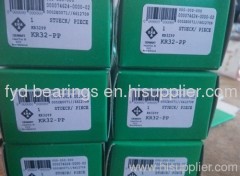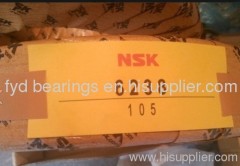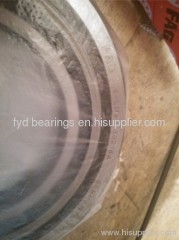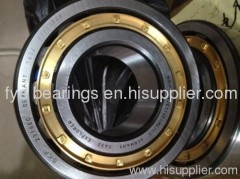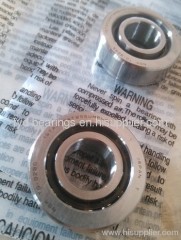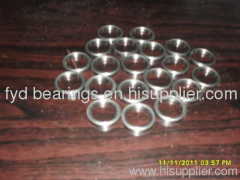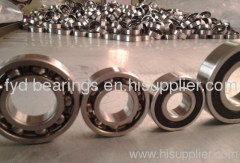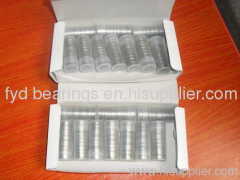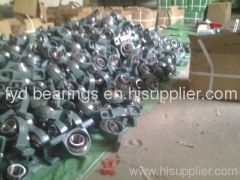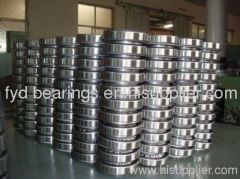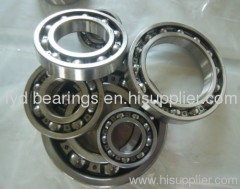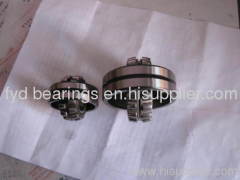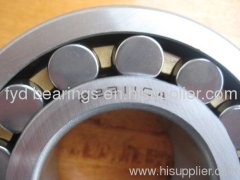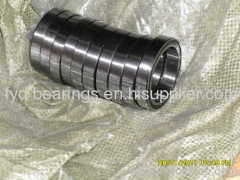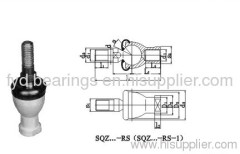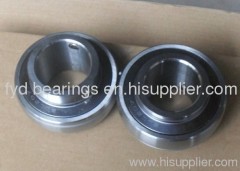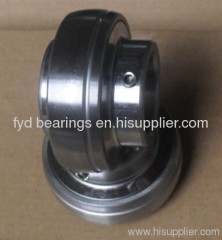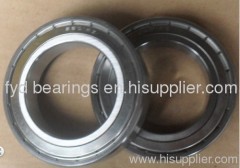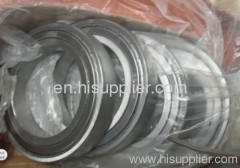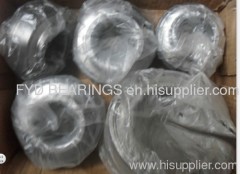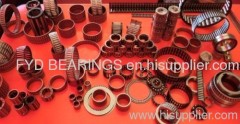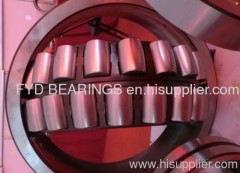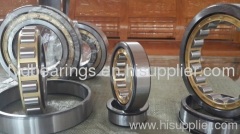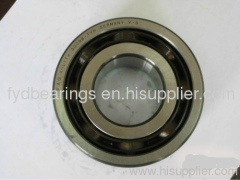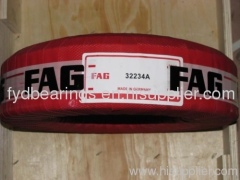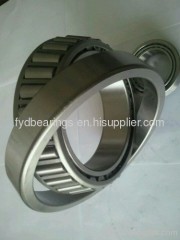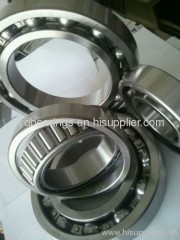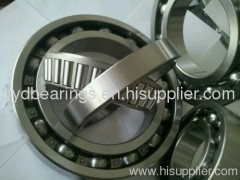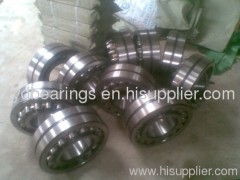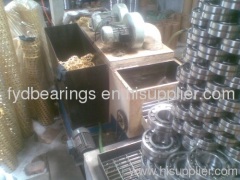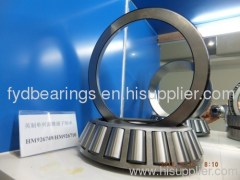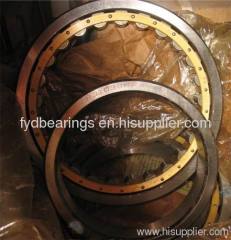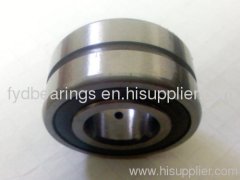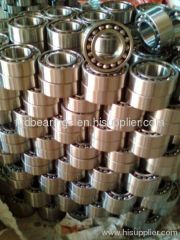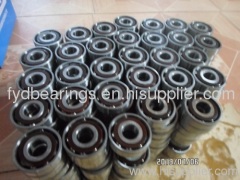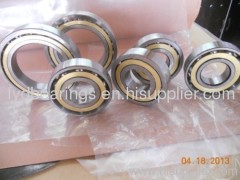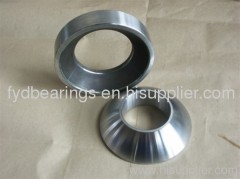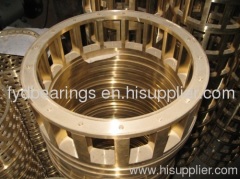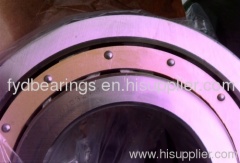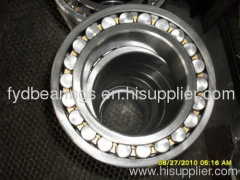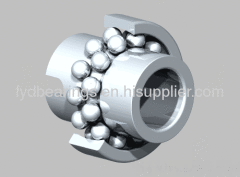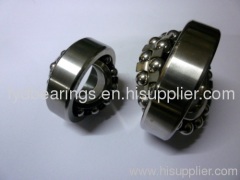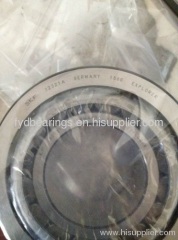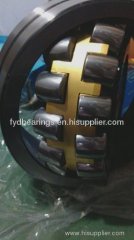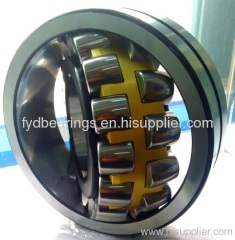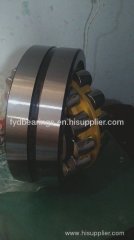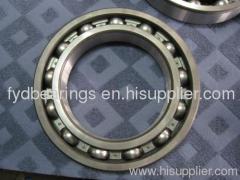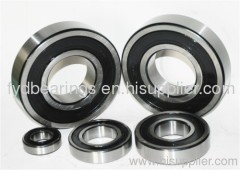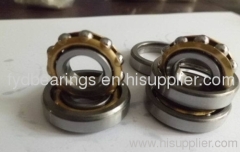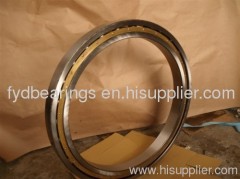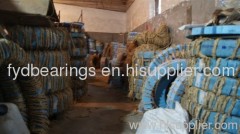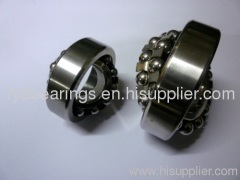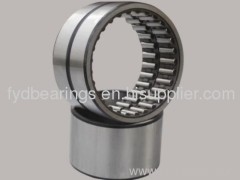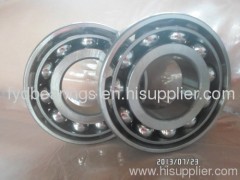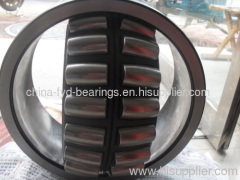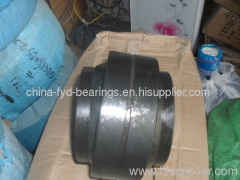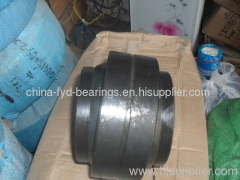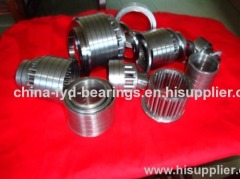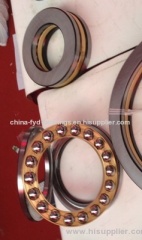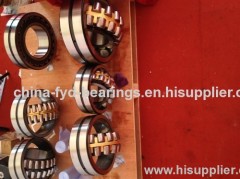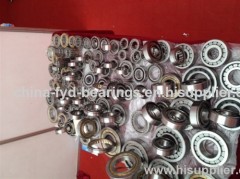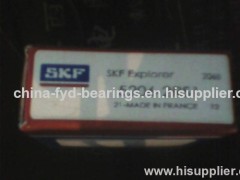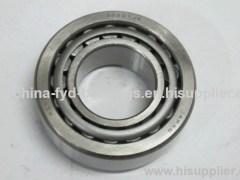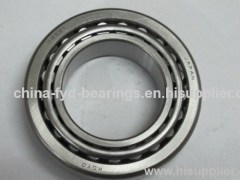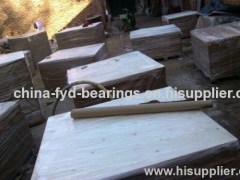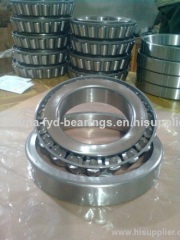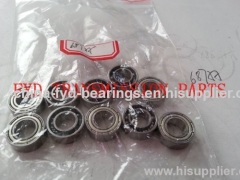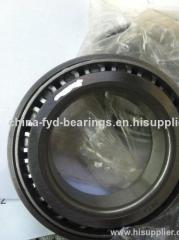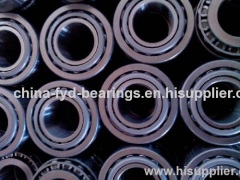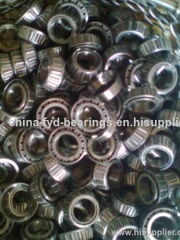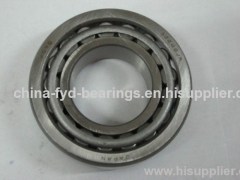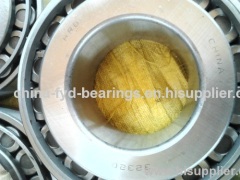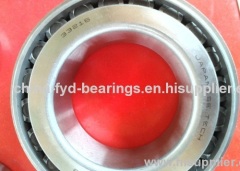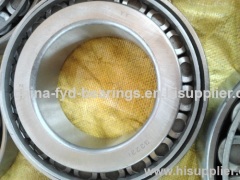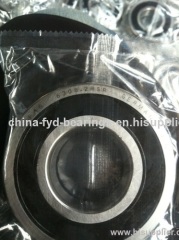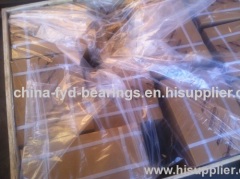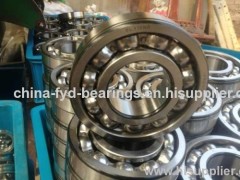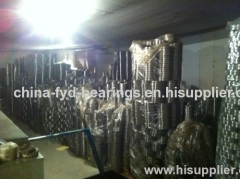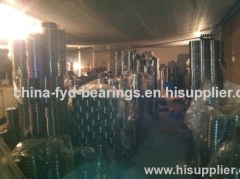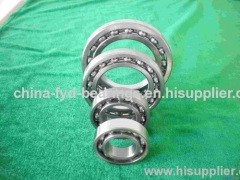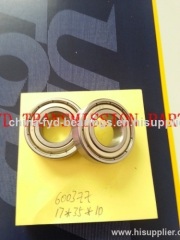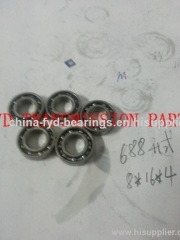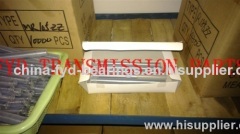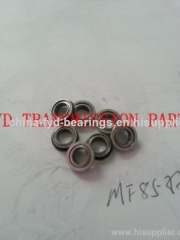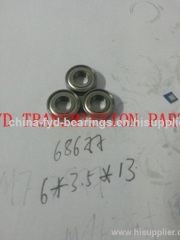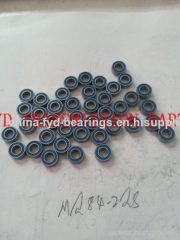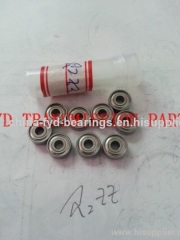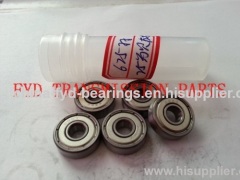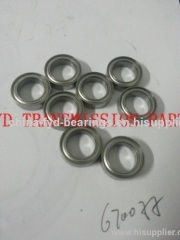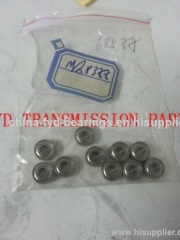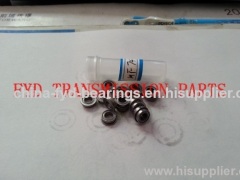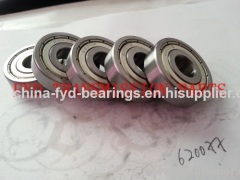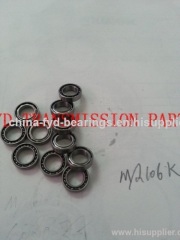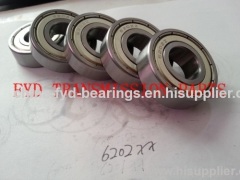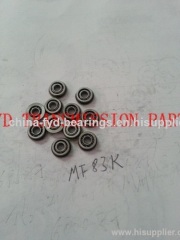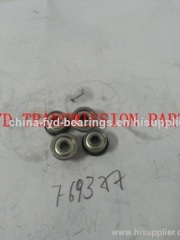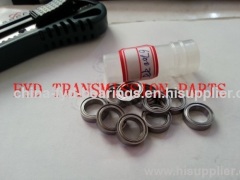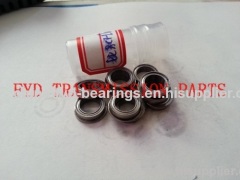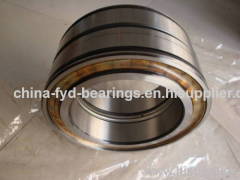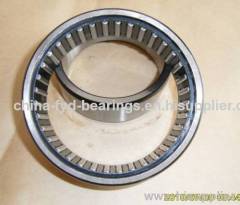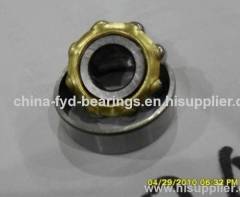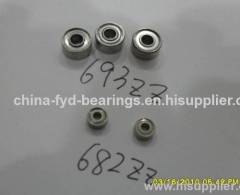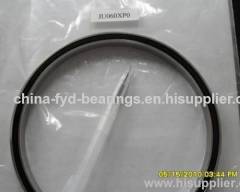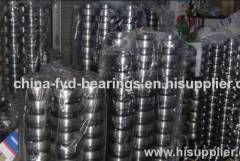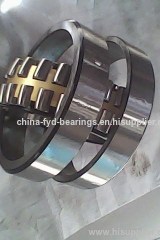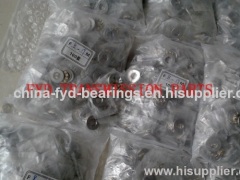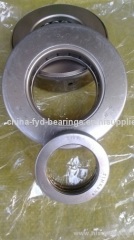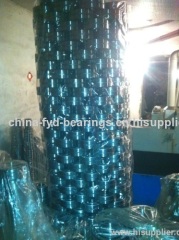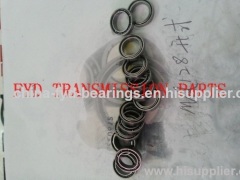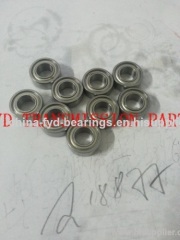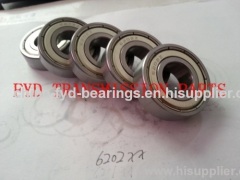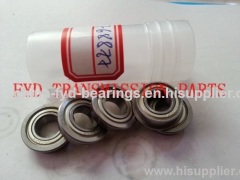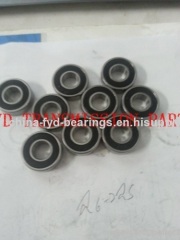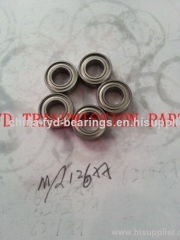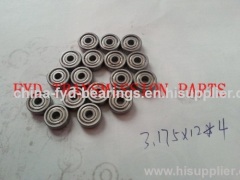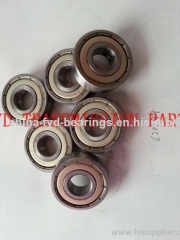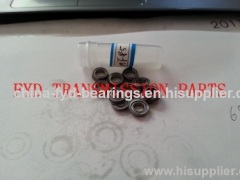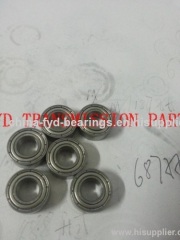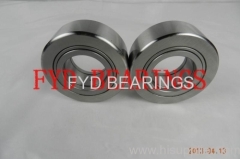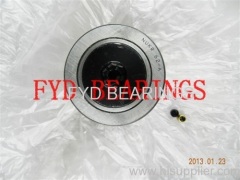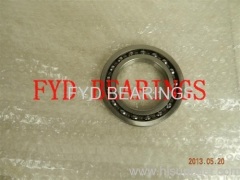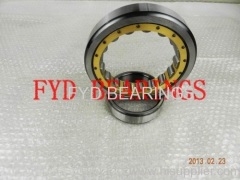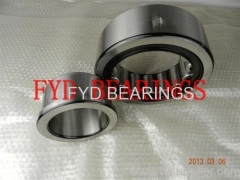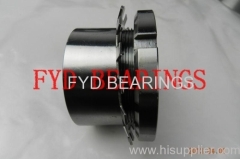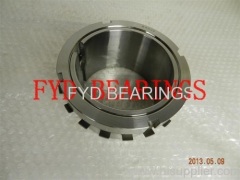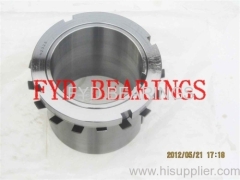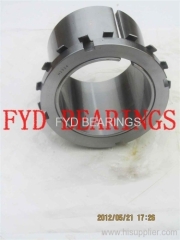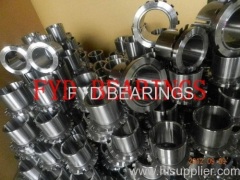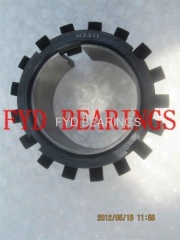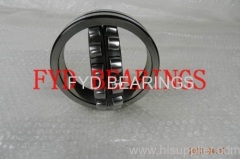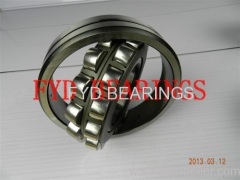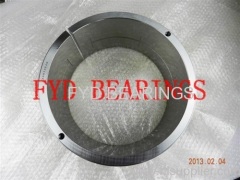
|
FYD TRANSMISSION PARTS CO.,LIMITED
|
Gold Index: 14093
roller fyd bearings rollers fyd rollers
| Place of Origin: | Hebei, China (Mainland) |
|
|
|
| Add to My Favorites | |
| HiSupplier Escrow |
Product Detail
Model No.:
roller
roller fyd bearings rollers fyd rollers
1. Press the bearing structure type classification
(1) can bear the load bearing according to the direction or different nominal contact angle, divided into:
A) radial bearings ---- mainly used to bear radial load bearing, its nominal contact angle from 0 to 45. At different nominal contact angle, is divided into: radial contact bearings ---- nominal contact angle of 0 radial bearings: Radial angular contact bearings ---- nominal contact angle greater than 0-45 of radial bearings.
2) ---- thrust bearing is mainly used for axial load bearing, its nominal contact angle greater than 45-90. Press the nominal contact angle is divided into different: axial contact bearings ---- nominal contact angle of 90 thrust bearings: Axial angular contact bearings ---- nominal contact angle greater than 45 but less than 90 of the thrust bearing.
(2) The rolling bearing according to the types, divided into:
1) Ball Bearing ---- the ball rolling:
2) Roller Bearing ---- rolling as rollers. Roller Bearing press roller types are divided into: cylindrical roller bearings ---- rolling body is cylindrical roller bearings, cylindrical roller length to diameter ratio of less than or equal to 3; needle bearing ---- rolling body is a needle roller bearings, needle length to diameter ratio greater than 3, but the diameter is less than or equal to 5mm; tapered roller bearings ---- rolling body is tapered roller bearings; aligning roller bearings eleven rolling body is spherical roller bearings.
(3) whether the bearing aligning their work, divided into:
A) aligning bearing ---- raceway is spherical in shape, able to adapt to two raceways angular misalignment between the axis line and angular movement of the bearing;
2) Non-aligning bearing (rigid bearing) ---- can impedance raceway of the bearing axis line angle offset.
(4) rolling bearing according to the number of columns, divided into:
1) having a single bearing ---- rolling bearing;
2) ---- double row bearings with two rows of rolling elements of the bearing;
3) multi-row bearings ---- with more than two rolling element bearings, such as three, four bearings.
(5) bearing their parts can detach, divided into:
1) Bearing ---- separable bearings with separable components;
2) non-separable bearings ---- bearings in the final package, the ring can not be separated any free bearings.
(6) bearing their structural shapes (eg with or without filling slot, with or without inner and outer rings and rings shape, wall structure, even without the cage, etc.) can also be divided into a variety of structural types.
2 Press the bearing outer diameter size categories according to their size bearings, divided into:
(1) miniature bearings ---- nominal diameter size range of 26mm or less bearing;
(2) small bearings ---- nominal diameter size range of 28-55mm bearings;
(3) small bearings ---- nominal diameter size range of 60-115mm bearings;
(4) the large bearing ---- nominal diameter size range of 120-190mm bearings
(5) large bearing ---- nominal diameter size range of 200-430mm bearings;
(6) large bearings ---- nominal diameter size range of 440mm or more bearings.
The basic production process of rolling III
Since the rolling bearing type, structure type, tolerance level, technical requirements, materials and quantities so different, the basic production processes are not identical.
One, a variety of bearing the main parts of the processing procedure:
1. Processing of the ferrule: the bearing inner and outer rings or the rough machining according to the form of raw materials vary, which car before processing can be divided into the following three, the whole process are: bar or tube material (subject to some bar forging and annealing, normalizing) ---- lathe ---- heat ---- grinding ---- lapping or polishing ---- Part Final Inspection ---- rust ---- storage ---- (to be co-suit with>
2. Processing of the ball, the ball according to the processing of the same raw material vary depending on the state, or the light which fell before the ball cutting process can be divided into the following three, before the heat treatment step can be divided into the following two kinds, the whole process is: bar or wire cold punch (some bars need to punch after punch cold zone and annealing) ---- setback cut, coarse, soft grinding or ball of light ---- Heat treatment - --- hard grinding ---- grinding ---- lapping or grinding ---- grouped ---- rust final inspection, packing ---- warehousing <pending suit with co>.
3. Processing of rollers of the processing roller according to the raw materials vary, wherein before the heat treatment process can be divided into the following two types, the whole process are: lathe bar or wire rod for cold heading and Polishing ring after the string ---- heat ---- string soft spots ---- Coarse OD ---- roughing end ---- end face grinding ---- grinding mill OD OD ---- Final ---- Final Inspection group ---- rust, packaging ---- warehousing (pending suit with co>.
4. Processing of the retainer cage structure according to the design process and raw materials can be divided into the following categories:
(1) Cut sheet → [1] → Punching → press → → shaping and finishing pickling or shot blasting or string light rust → → final inspection, packing → warehousing (co-pending suit with)
(2) the processing of solid cage: solid cage of the processing, according to raw materials or bad hair vary, which vehicles can be divided into the following four before processing the rough type, the whole process are: bar, pipe materials, forgings, castings ---- car ID, OD, face, chamfer ---- Drilling (or broaching, boring) ---- pickling ---- Final Inspection ---- rust, packaging ---- warehousing <pending suit with co>.
Second, the bearing assembly process:
Rolling bearing parts such as the inner ring, outer ring, rolling elements and cage, etc., after passing inspection, enter the assembly plant for assembly, the process is as follows:
Parts demagnetization, cleaning → inner and outer roll <ditch> channel size grouping together sets of sorting → → → Check clearance riveting cage → → demagnetization final inspection, cleaning → rust, Packaging → into finished products (packing, shipping >.
IV characteristics of rolling bearings
Rolling and plain bearings, has the following advantages:
1. Rolling friction coefficient smaller than the sliding bearing, high transmission efficiency. Average coefficient of friction bearing 0.08-0.12, and the rolling friction coefficient is only 0.001-0.005;
2. Rolling has achieved standardization, serialization, universal, suitable for mass production and supply, use and maintenance is very convenient;
3. Rolling bearing steel, and after heat treatment, therefore, bearing not only has high mechanical properties and long life, and can save manufacturing plain bearings are used in more expensive non-ferrous metals;
4. Bearing internal clearance is small, high precision machining of parts, therefore, high running accuracy. At the same time, by pre-loading method of increasing the rigidity of the bearing. This precision machinery is very important;
5. Some bearing can support radial load and axial load, so you can simplify the bearing support structure;
6. Since rolling high transmission efficiency, less heat, therefore, can reduce oil consumption, lubrication maintenance more easy;
7. Rolling can be easily applied to space any orientation on uranium.
However, everything is divided into two, roll [1] dynamic bearing also has some disadvantages, mainly:
1. Bear the load bearing capacity than the same volume of the sliding bearing is much smaller, therefore, the radial bearing large size. So, in the case of heavy load to bear and small radial size requirements, structural requirements for compact applications <as crankshaft bearings), the use of sliding bearings;
2. Bearing vibration and noise is higher, especially in the use of late is particularly significant, therefore, demanding precision, without Xu Youzhen moving occasion, bearing difficult competent, generally used in sliding bearings better
3. Rolling of metal shavings and other foreign matter are particularly sensitive to foreign matter enters the bearing will produce a large vibration and noise intermittently, also cause early damage. In addition, because the metal clip bearing impurities also prone to the possibility of early damage. Even early damage does not occur, the life of rolling bearings have certain limits. In short, the life of rolling bearings shorter than the sliding bearing.
However, Rolling and plain bearings, compared advantages and disadvantages of each occupy a certain application of occasions, so the two can not completely replace each other, and each to a certain direction, to expand their fields. However, due to the outstanding advantages of rolling bearings, quite latecomers trend. Rolling Machinery has developed into a major bearing type, application more widely.
(1) can bear the load bearing according to the direction or different nominal contact angle, divided into:
A) radial bearings ---- mainly used to bear radial load bearing, its nominal contact angle from 0 to 45. At different nominal contact angle, is divided into: radial contact bearings ---- nominal contact angle of 0 radial bearings: Radial angular contact bearings ---- nominal contact angle greater than 0-45 of radial bearings.
2) ---- thrust bearing is mainly used for axial load bearing, its nominal contact angle greater than 45-90. Press the nominal contact angle is divided into different: axial contact bearings ---- nominal contact angle of 90 thrust bearings: Axial angular contact bearings ---- nominal contact angle greater than 45 but less than 90 of the thrust bearing.
(2) The rolling bearing according to the types, divided into:
1) Ball Bearing ---- the ball rolling:
2) Roller Bearing ---- rolling as rollers. Roller Bearing press roller types are divided into: cylindrical roller bearings ---- rolling body is cylindrical roller bearings, cylindrical roller length to diameter ratio of less than or equal to 3; needle bearing ---- rolling body is a needle roller bearings, needle length to diameter ratio greater than 3, but the diameter is less than or equal to 5mm; tapered roller bearings ---- rolling body is tapered roller bearings; aligning roller bearings eleven rolling body is spherical roller bearings.
(3) whether the bearing aligning their work, divided into:
A) aligning bearing ---- raceway is spherical in shape, able to adapt to two raceways angular misalignment between the axis line and angular movement of the bearing;
2) Non-aligning bearing (rigid bearing) ---- can impedance raceway of the bearing axis line angle offset.
(4) rolling bearing according to the number of columns, divided into:
1) having a single bearing ---- rolling bearing;
2) ---- double row bearings with two rows of rolling elements of the bearing;
3) multi-row bearings ---- with more than two rolling element bearings, such as three, four bearings.
(5) bearing their parts can detach, divided into:
1) Bearing ---- separable bearings with separable components;
2) non-separable bearings ---- bearings in the final package, the ring can not be separated any free bearings.
(6) bearing their structural shapes (eg with or without filling slot, with or without inner and outer rings and rings shape, wall structure, even without the cage, etc.) can also be divided into a variety of structural types.
2 Press the bearing outer diameter size categories according to their size bearings, divided into:
(1) miniature bearings ---- nominal diameter size range of 26mm or less bearing;
(2) small bearings ---- nominal diameter size range of 28-55mm bearings;
(3) small bearings ---- nominal diameter size range of 60-115mm bearings;
(4) the large bearing ---- nominal diameter size range of 120-190mm bearings
(5) large bearing ---- nominal diameter size range of 200-430mm bearings;
(6) large bearings ---- nominal diameter size range of 440mm or more bearings.
The basic production process of rolling III
Since the rolling bearing type, structure type, tolerance level, technical requirements, materials and quantities so different, the basic production processes are not identical.
One, a variety of bearing the main parts of the processing procedure:
1. Processing of the ferrule: the bearing inner and outer rings or the rough machining according to the form of raw materials vary, which car before processing can be divided into the following three, the whole process are: bar or tube material (subject to some bar forging and annealing, normalizing) ---- lathe ---- heat ---- grinding ---- lapping or polishing ---- Part Final Inspection ---- rust ---- storage ---- (to be co-suit with>
2. Processing of the ball, the ball according to the processing of the same raw material vary depending on the state, or the light which fell before the ball cutting process can be divided into the following three, before the heat treatment step can be divided into the following two kinds, the whole process is: bar or wire cold punch (some bars need to punch after punch cold zone and annealing) ---- setback cut, coarse, soft grinding or ball of light ---- Heat treatment - --- hard grinding ---- grinding ---- lapping or grinding ---- grouped ---- rust final inspection, packing ---- warehousing <pending suit with co>.
3. Processing of rollers of the processing roller according to the raw materials vary, wherein before the heat treatment process can be divided into the following two types, the whole process are: lathe bar or wire rod for cold heading and Polishing ring after the string ---- heat ---- string soft spots ---- Coarse OD ---- roughing end ---- end face grinding ---- grinding mill OD OD ---- Final ---- Final Inspection group ---- rust, packaging ---- warehousing (pending suit with co>.
4. Processing of the retainer cage structure according to the design process and raw materials can be divided into the following categories:
(1) Cut sheet → [1] → Punching → press → → shaping and finishing pickling or shot blasting or string light rust → → final inspection, packing → warehousing (co-pending suit with)
(2) the processing of solid cage: solid cage of the processing, according to raw materials or bad hair vary, which vehicles can be divided into the following four before processing the rough type, the whole process are: bar, pipe materials, forgings, castings ---- car ID, OD, face, chamfer ---- Drilling (or broaching, boring) ---- pickling ---- Final Inspection ---- rust, packaging ---- warehousing <pending suit with co>.
Second, the bearing assembly process:
Rolling bearing parts such as the inner ring, outer ring, rolling elements and cage, etc., after passing inspection, enter the assembly plant for assembly, the process is as follows:
Parts demagnetization, cleaning → inner and outer roll <ditch> channel size grouping together sets of sorting → → → Check clearance riveting cage → → demagnetization final inspection, cleaning → rust, Packaging → into finished products (packing, shipping >.
IV characteristics of rolling bearings
Rolling and plain bearings, has the following advantages:
1. Rolling friction coefficient smaller than the sliding bearing, high transmission efficiency. Average coefficient of friction bearing 0.08-0.12, and the rolling friction coefficient is only 0.001-0.005;
2. Rolling has achieved standardization, serialization, universal, suitable for mass production and supply, use and maintenance is very convenient;
3. Rolling bearing steel, and after heat treatment, therefore, bearing not only has high mechanical properties and long life, and can save manufacturing plain bearings are used in more expensive non-ferrous metals;
4. Bearing internal clearance is small, high precision machining of parts, therefore, high running accuracy. At the same time, by pre-loading method of increasing the rigidity of the bearing. This precision machinery is very important;
5. Some bearing can support radial load and axial load, so you can simplify the bearing support structure;
6. Since rolling high transmission efficiency, less heat, therefore, can reduce oil consumption, lubrication maintenance more easy;
7. Rolling can be easily applied to space any orientation on uranium.
However, everything is divided into two, roll [1] dynamic bearing also has some disadvantages, mainly:
1. Bear the load bearing capacity than the same volume of the sliding bearing is much smaller, therefore, the radial bearing large size. So, in the case of heavy load to bear and small radial size requirements, structural requirements for compact applications <as crankshaft bearings), the use of sliding bearings;
2. Bearing vibration and noise is higher, especially in the use of late is particularly significant, therefore, demanding precision, without Xu Youzhen moving occasion, bearing difficult competent, generally used in sliding bearings better
3. Rolling of metal shavings and other foreign matter are particularly sensitive to foreign matter enters the bearing will produce a large vibration and noise intermittently, also cause early damage. In addition, because the metal clip bearing impurities also prone to the possibility of early damage. Even early damage does not occur, the life of rolling bearings have certain limits. In short, the life of rolling bearings shorter than the sliding bearing.
However, Rolling and plain bearings, compared advantages and disadvantages of each occupy a certain application of occasions, so the two can not completely replace each other, and each to a certain direction, to expand their fields. However, due to the outstanding advantages of rolling bearings, quite latecomers trend. Rolling Machinery has developed into a major bearing type, application more widely.
Related Search
Find more related products in following catalogs on Hisupplier.com
Related Products
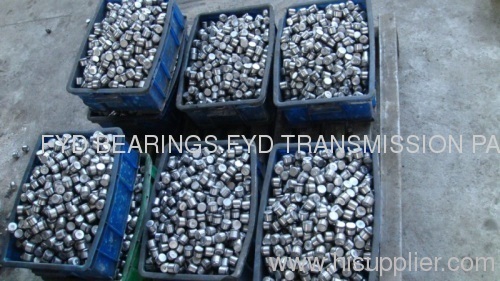
Company Info
FYD TRANSMISSION PARTS CO.,LIMITED [China (Mainland)]
Business Type:Manufacturer, Trading Company, Agent, Distributor/Wholesaler, Service
City: Xingtai
Province/State: Hebei
Country/Region: China (Mainland)
You May Like:
Product (300)
- thrust roller bearing (1)
- thrust ball bearings (3)
- needle roller bearings (7)
- taper roller bearings (10)
- self aligning roller bearings (4)
- cylindrical roller bearings (17)
- deep groove ball bearings (21)
- angular contact ball bearings (11)
- Others (226)

